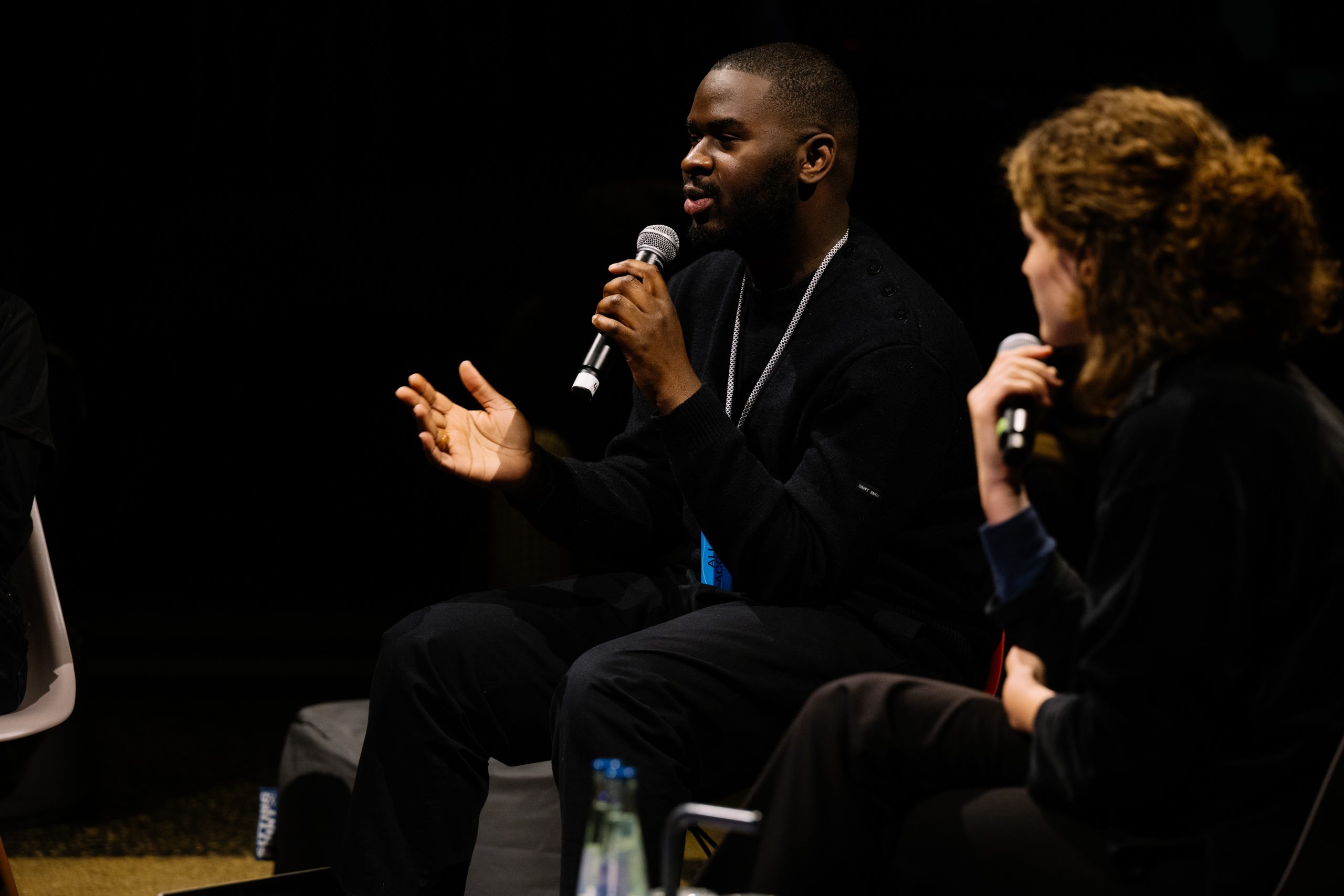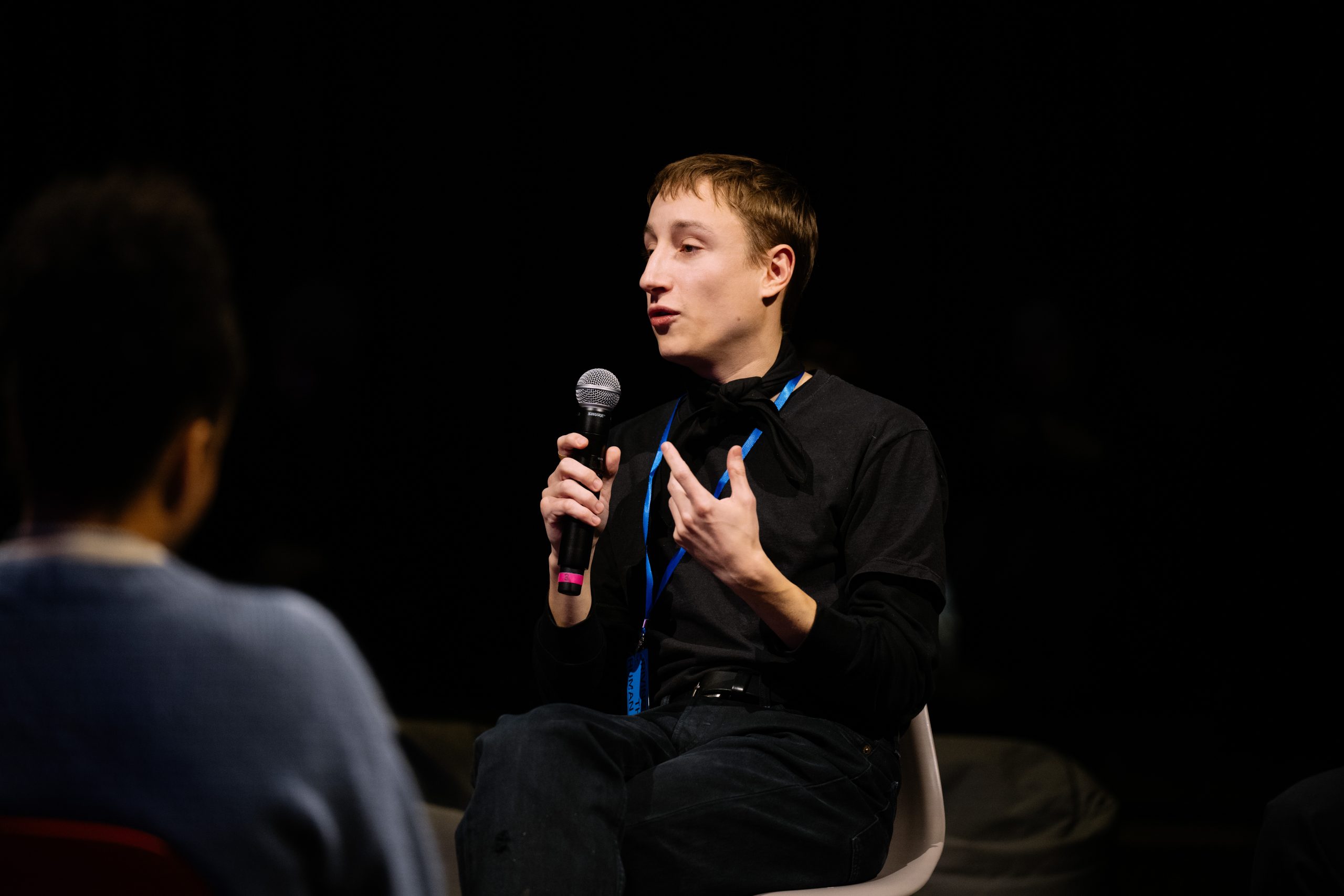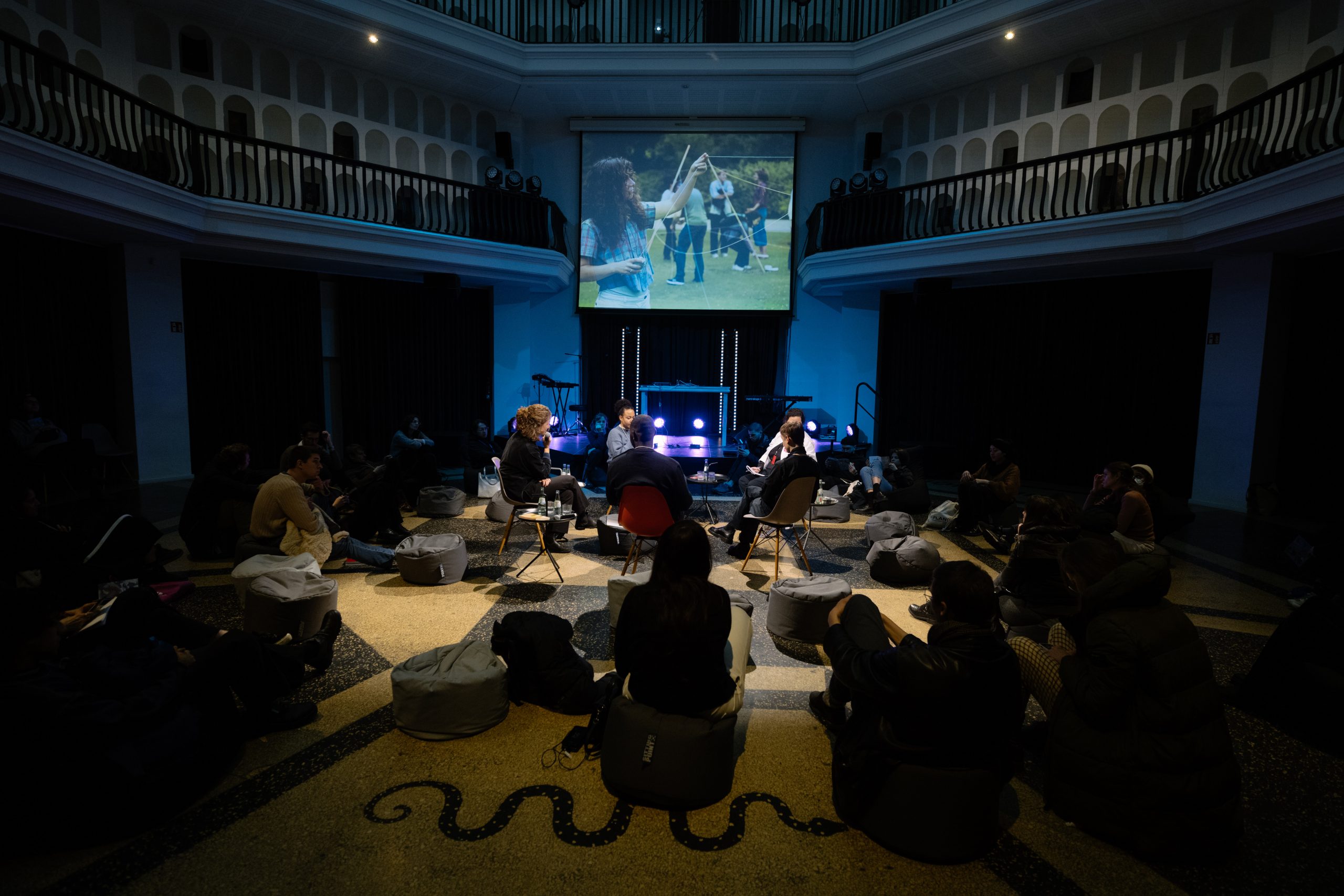
Centering Sustainable and Circular Practices
At the Driving the Human festival, LINA fellows Tevi Allan Mensah, Jonathan Steiger, and Studio Inscape showed how they focus on creating sustainable and resilient ways of working that are transdisciplinary and multilayered.
On the second day of the Driving the Human Festival, the conversation “Centering Sustainable and Circular Practices” invited LINA fellows Tevi Allan Mensah, Jonathan Steiger, and Studio Inscape to discuss their practices and how they focus on creating sustainable and resilient ways of working, that are both transdisciplinary and multilayered.
During this conversation, LINA fellows introduced their practices and reflected on how they connected and related to the themes on display during the festival. Rotterdam’s Studio Inscape (Eileen Stornebrink and Willie Vogel) introduced their research-based design practice, which combines architecture and urbanism alongside a network of collaborators of diverse backgrounds. Influenced by Bruno Latour and his “Parliament of Things”, they have developed the project Oosterschelde Negotiation, focusing on the southwestern Delta region in the Netherlands. Here, they developed a game looking at all the different inhabitants of the region; not just humans, but also animals, plants and even landscapes as a whole. This allowed participants to become acquainted with the ecological politics of the region, and reflect on how to approach and redesign the area. “We find it interesting to use this concept as a design method and therefore we translated it to a workshop setup that could be site-specific,” said Studio Inscape’s Eileen Stornebrink. “Here, we make sure that the unheard voices, the non-represented voices that also inhabit those spaces are represented. ”

The “Centering Sustainable and Circular Practices” conversation with Tevi Allan Mensah, Jonathan Steiger, and Studio Inscape
Tevi Allan Mensah, on the other hand, is a French architect with a research-based practice, working at the intersection of architecture and artistic creation. His recent project Borderlands takes a speculative approach to the idea of borders, starting with the idea that any architectural act creates a border—always drawing lines and making separations between one space and another. From that, Mensah works with the idea of borders not as something negative, but as a territory of possibilities. “A border is a threshold, but it’s also a displacement,” he points out. “Nowadays, it can be something virtual. It’s a place of heterotopia, it’s a place where a lot of things can happen. How can we, as architects, work with it? Can work with that tiny gap between things to change them—and first and foremost, to change perspective?” As he works between practice, research, and education, Borderlands manifests in multiple ways, from installations and temporary projects to writing and drawing.

Tevi Allan Mensah at the “Centering Sustainable and Circular Practices” conversation
For Jonathan Steiger, a Swiss artist based in Amsterdam, the idea to work across multiple media and in a multidisciplinary way is one he has pursued for several years. Currently, he has been working on the theme of landscape, which he defines as “not an actual tract of land, but a concept or a product of our imagination. It’s a cultural lens through which we relate to nature and to other things.” Currently, Steiger is working on a project about Dutch landscape, focusing on the idea of anthropogenic landscape. As a mostly man-made landscape, the territory of the Netherlands features, among others, many artificial hills, which Steiger has been focusing on in his practice. Many of these are actually landfills, which Steiger documents in video and photography, dealing with the idea of things mankind wants to dispose of, but always come back. “Somehow, it’s not possible to completely tuck this trash away, to completely make it invisible,” Steiger points out. “And these moments where the materiality somehow comes back to reveal itself is what I find quite fascinating.”

Jonathan Steiger at the “Centering Sustainable and Circular Practices” conversation
Driving the Human invited the three LINA fellows to bring their unique lens to the festival and propose a reaction to what they saw at silent green. All of these took different shapes: Studio Inscape led a workshop; Jonathan Steiger produced a series of images using his specific work methodology, and Tevi Allan Mensah produced a series of reflections and drawings, which will also materialize in a text to be published in the Driving the Human journal. As the conversation drew to a close, Tevi Allan Mensah offered a poignant observation as a concluding thought: “the most important issue for our fields in arts, science or architecture is that we need to find new models. We need to completely rethink our governance systems and ways of seeing the world. And that’s really the proposition of the seven prototypes.”

The “Centering Sustainable and Circular Practices” conversation with Tevi Allan Mensah, Jonathan Steiger, and Studio Inscape








